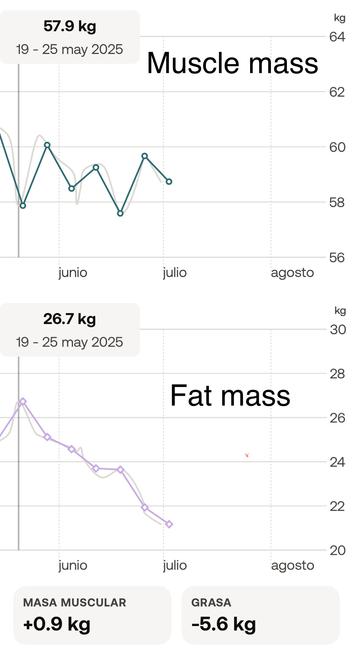I put this behind a content warning, since I know firsthand how difficult (or boring?) it can be to read someone’s fitness and recovery progress while one’s disability is pushing them in the other direction. For anyone with MECFS/Long Covid, hang in there. I never expected to be seeing any recovery, but I am now at over 2 weeks of daily activity with limited exertion and no crashes.
I can’t tell you what changed, as I have been using so many interventions. Here’s the chronology of major interventions:
Oct 2022, initial SARS-CoV-2 infection. Long Covid. Continued working full time
Sep 2023. Started bupropion for alertness. Started CoQ-10 for neurocapacity. Started inhaled steroid/broncodilator for shortness of breath (reactive airway disease). Dropped work schedule to 50% time.
Mar 2023. Began tracking pulse, heart rate variability, and pacing using Visible app and armband tracker.
Sep 2024, close to low point in capacity/ability. Stopped working and starting focusing full time on recovery and health. Started creatine monohydrate and protein supplements for muscle density, closer attention to hydration at first feeling of thirst or dry lips. Started lower-dose cannabis 2-4X daily.
May 2025 after 8 months of gradual and modest improvement in capacity, started increasing daily activity, while keeping pulse below exertion levels.
June 2025 began fat loss diet of continued or increased activity, decreased calorie intake, increased protein and fiber,
Which brings us to today, where my lean body mass percentage has increased to 74.5% (my target is > 76%) and my fat mass percentage is down to 25.5% (my target is <= 24%). Along the way, I have dropped my total body mass from 88.8 kg to 83.0 kg.
Although body fat reduction is my primary goal, to get there I am aiming for about 78 kg total body mass. At 24% body fat, that is just under 19 kg of body fat. I am currently at just over 21 kg estimated body fat, so as long as I can maintain my total muscle mass, if I lose another 5 kg of total mass, that should translate to another 2-3 kg of fat loss.
If I can increase my muscle mass, I can bring that body fat percentage even lower than 24% (13-24% is considered a healthy range for 60+ year old T-dominant people, 21-34% for E/P-dominant people).
I’m currently T-dominant, but plan to change that over the next year, so I need to prepare my body for the additional fat coming with E2/P supplementation (and T reduction). That’s why my stretch goal is 75 kg body mass and 20% fat percentage or 15 kg total body fat. The only way to get there is if I can manage some addition of muscle along with the reduction in fat.
All these numbers brought to you courtesy of my Withings scale, which does a credible job of estimating body fat percentage using “multi-frequency body impedance analysis” to detect differences in conductivity among the balls and heels of your feet. I will never forgive Withings for the travesty that was their “ScanWatch” (battery stopped accepting a charge after 3 years and is non-replaceable), but the scale has been rock solid.

